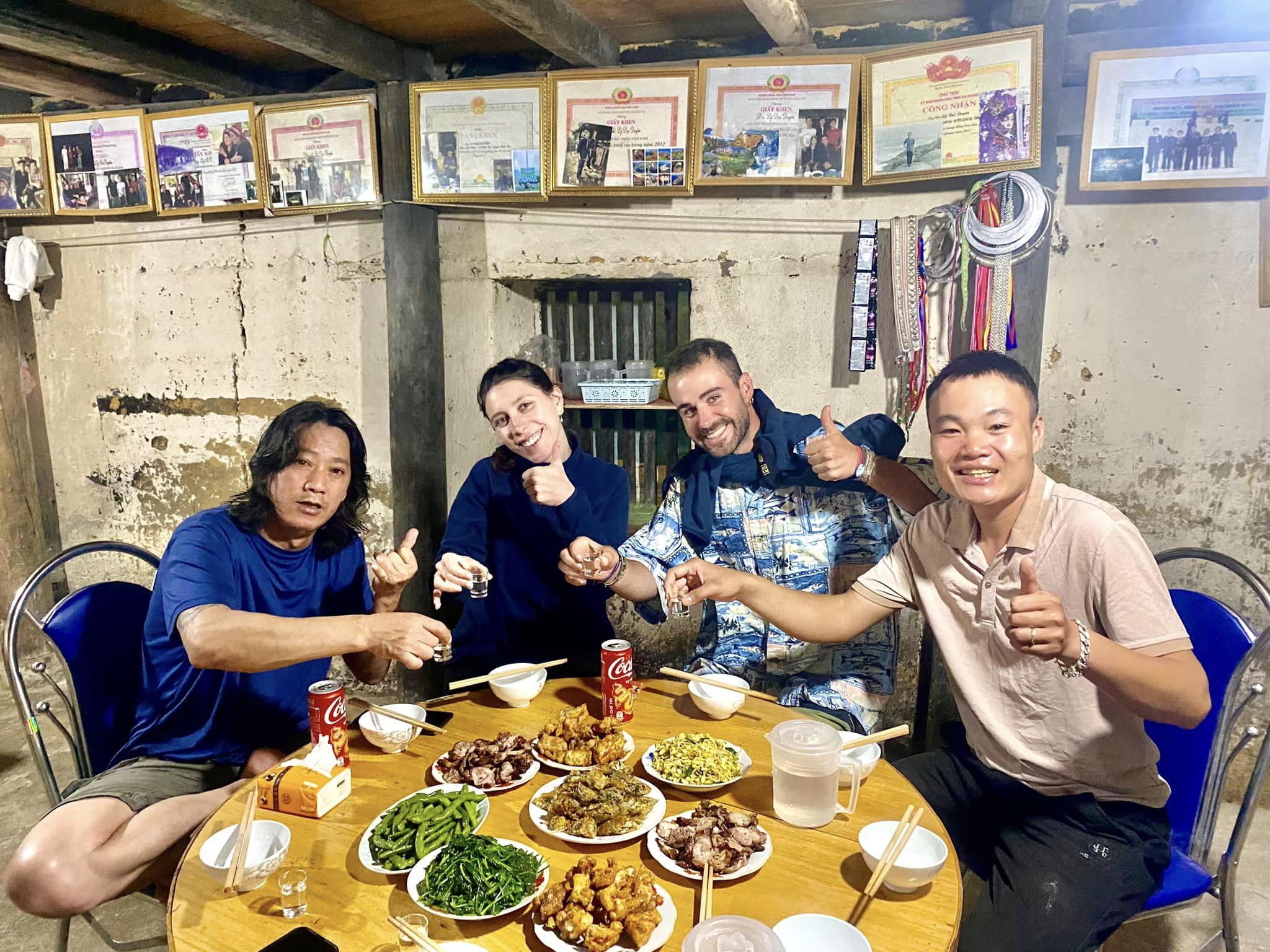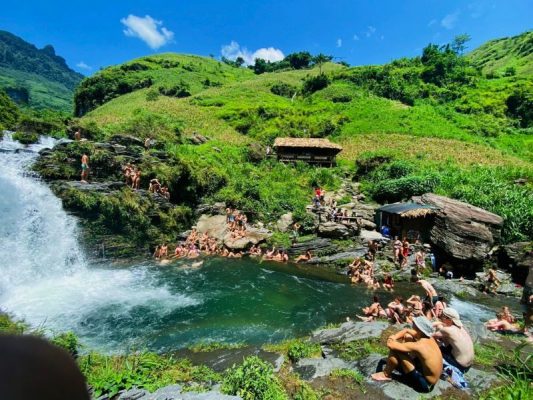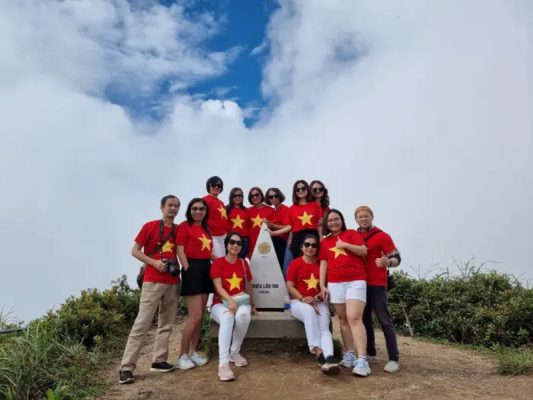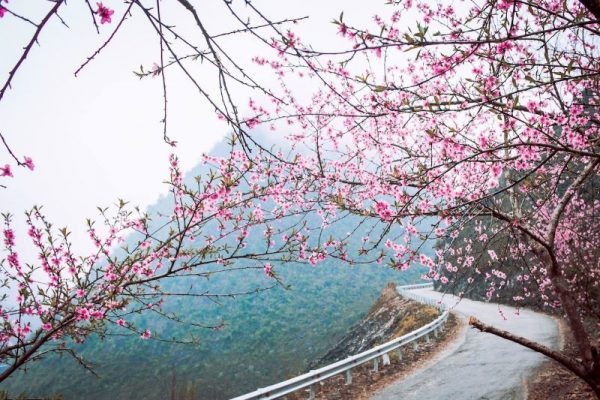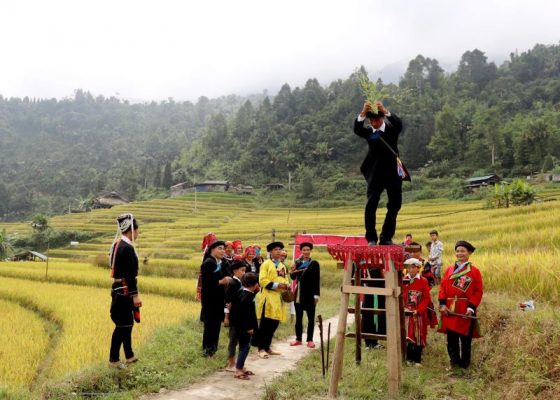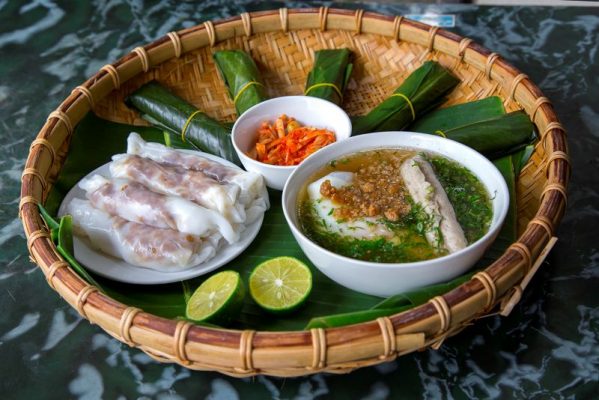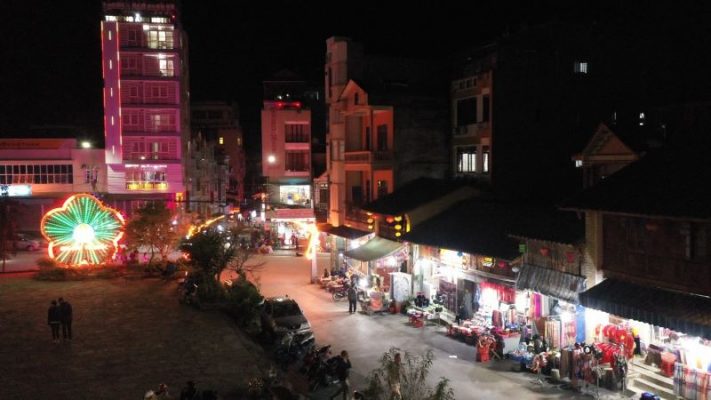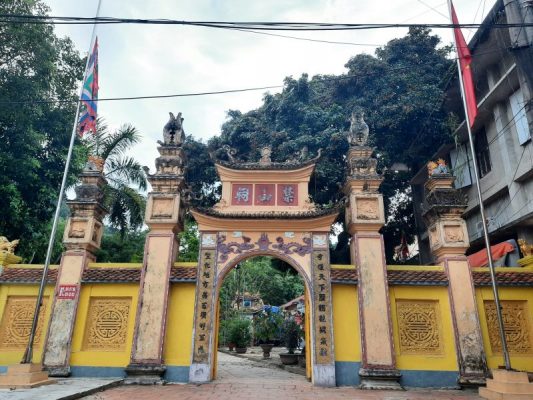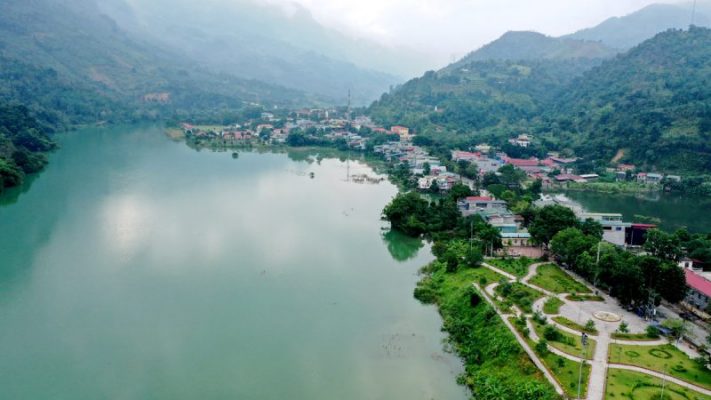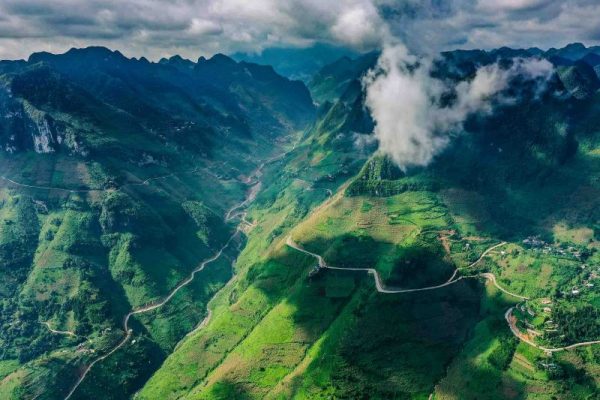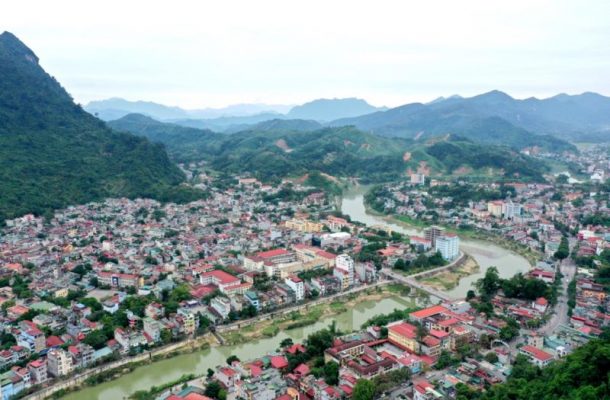Ha Giang Loop is home to more than 20 ethnic minority in Ha Giang groups, including the H’Mong, Tày, Dao, Lô Lô, and Nùng. Each group brings its own unique culture, customs, and traditions. The distinctive features of these highland ethnic groups are not only reflected in their colorful clothing but also in their way of life and festivals. Let’s explore the rich diversity of these ethnic groups in the mountainous region of Hà Giang with Ha Giang Motorbike Tours in this article!
How many ethnic minority are there in Ha Giang?
Hà Giang is home to about 17 to 20 ethnic minority groups, with the most prominent being the H’Mong, Dao, Tày, Nùng, and Lô Lô. Each group carries its own unique and distinctive culture, from vibrant traditional brocade clothing to special customs, traditions, and colorful folk festivals.
In particular, the ethnic groups in Ha Giang are also famous for their traditional crafts like weaving, pottery, and silver carving, which add to the cultural diversity of this rocky highland. The rich culture and the variety of ethnic minorities in Ha Giang attract many tourists from around the world every year.
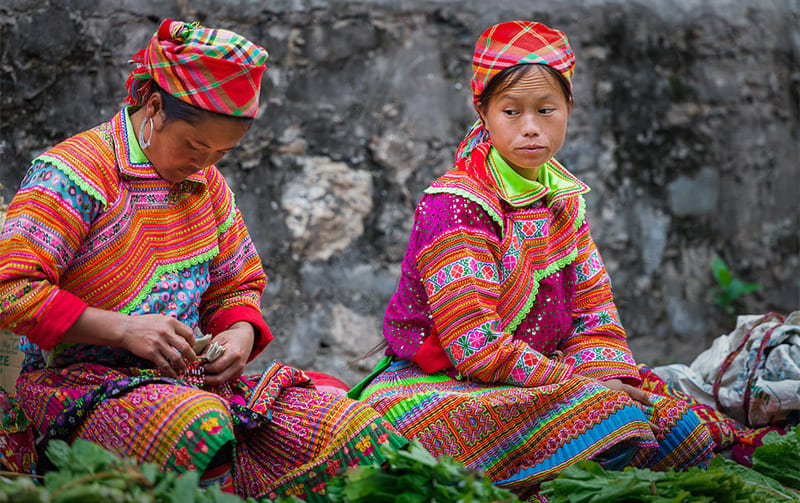
Characteristics of the 6 most popular ethnic minority in Ha Giang
Each ethnic group living in Ha Giang has its own unique characteristics, from clothing and customs to traditional festivals, creating a rich and diverse cultural landscape for this region. Below are the six most common ethnic minority in Ha Giang:
Mong ethnic group
The Hmong people primarily live in high mountainous regions and are closely associated with farming, especially growing corn, rice, and tobacco. They have distinct cultural traditions, including colorful handwoven clothing and festivals Ha Giang that strongly reflect their ethnic identity, such as the New Rice Festival and the Gầu Tào Festival. Not only are their festivals remarkable, but they are also known for their intricate weaving and embroidery skills, which produce unique handmade products. Their clothing is particularly notable for its vibrant patterns, reflecting their rich cultural heritage.
The blend of natural beauty and the Hmong’s rich culture attracts many tourists from around the world each year. Activities like trekking and participating in traditional festivals offer visitors unique and unforgettable experiences.
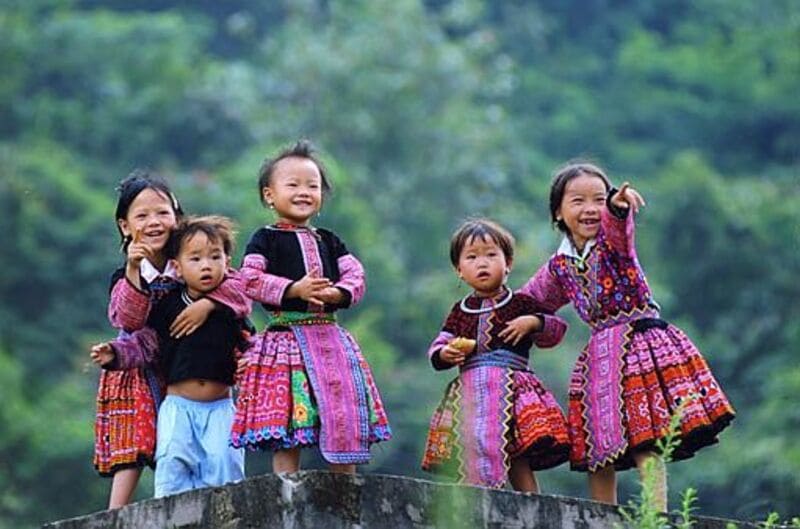
Tay ethnic group
One of the major ethnic minority in Ha Giang, the Tày people mainly live in valleys and along rivers. The Tày are known for their strong agricultural culture, especially growing wet rice and fruit trees. One of their cultural highlights is their stilt houses, built on higher ground to avoid floods, while also keeping warm in winter and cool in summer. The Tày people wear beautiful clothing, usually made from natural cotton with intricate hand-embroidered patterns. Their cuisine is rich and diverse, featuring dishes like five-color sticky rice, boiled chicken, and sour fish soup.
The traditional festivals of the Tày, such as the Lồng Tồng festival, take place at the beginning of the new year to pray for good harvests. This is an opportunity for the community to come together, show unity, and express gratitude to nature. With their unique culture and close connection to nature, the Tày people contribute to the diverse and rich cultural landscape of Ha Giang, attracting the interest of many visitors.
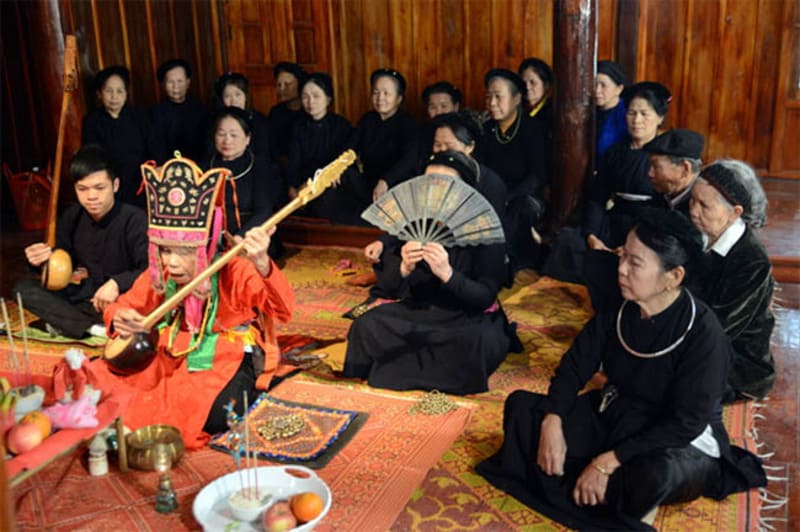
Dao ethnic group
With unique cultural traits and customs, the Dao ethnic group is one of the most prominent minority groups. The Dao people are known for their distinctive traditional clothing, often in shades of red, adorned with intricate embroidery, especially the women’s attire during festivals. The Dao celebrate many special festivals, with the “Lễ Cấp Sắc” (Rite of Passage) being one of the most important. This festival marks the coming of age for men and is typically celebrated with solemn rituals and unique cultural activities that showcase the Dao’s identity.
The combination of natural scenery, distinctive culture, and traditional festivals makes the Dao community appealing, attracting many visitors eager to explore and experience it.
See more: All the latest travel Ha Giang Loop Tour Cost 2025
Giay ethnic group
The Giay people are known for their diverse traditional clothing, often made from cotton fabric and featuring intricate hand-embroidered patterns. Their culinary culture is also rich, with many specialty dishes prepared from natural ingredients. Their customs and traditions are closely tied to nature and traditional agriculture, mainly growing rice, corn, and various fruit trees.
The Giay’s festivals usually take place at the beginning of the new year or during harvest seasons, showing gratitude to nature and their ancestors. These ceremonies are not only a time to pray for abundant crops but also an opportunity for the community to bond and preserve their cultural identity.
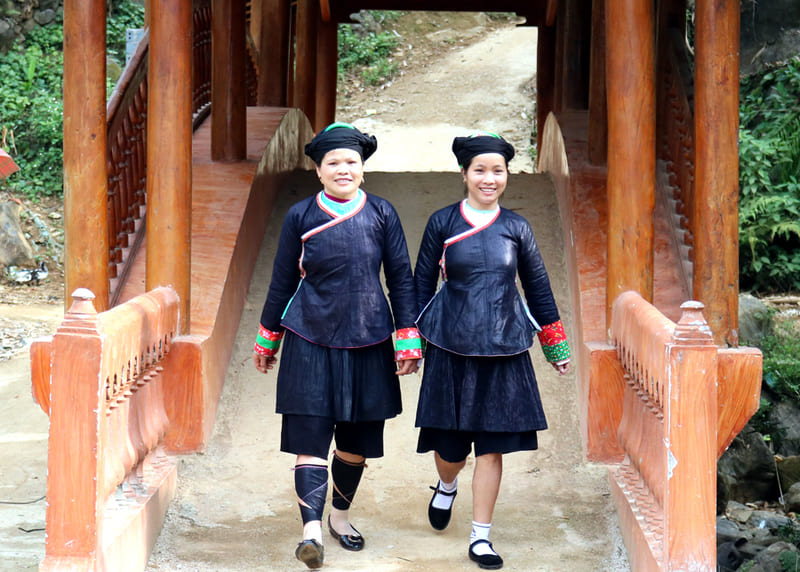
Nung ethnic group
The Nùng people have vibrant traditional clothing, usually made from brocade fabric, with traditional patterns and a variety of colors. They are also known for their diverse culinary culture, featuring signature dishes such as sticky rice, square glutinous rice cakes, and foods made from meat and vegetables.
The Nùng’s traditional festivals often take place at the beginning of the new year and during the harvest season, expressing gratitude to the land and nature. One of the most notable festivals is the Gầu Tào Festival, where the Nùng people pray for a bountiful harvest and peace for the community. The Nùng people not only enrich Ha Giang’s culture but also make it an appealing destination for tourists looking to explore the unique cultures of ethnic minorities.
Lo Lo ethnic group
The Lô Lô people usually live in high mountainous areas, where the climate is cool and the terrain is rugged. They are known for their rich culture and unique characteristics. Lô Lô women often wear long skirts and jackets, while the men typically dress more simply, but still in a way that reflects their ethnic identity. In terms of food, the Lô Lô mainly grow rice, corn, and various vegetables. Their traditional dishes are often made from natural ingredients, with a cooking style full of local flavors. Some standout dishes include colorful sticky rice and grilled meats. The Lô Lô people attract tourists not only with their natural landscapes but also with the chance to experience their unique culture.
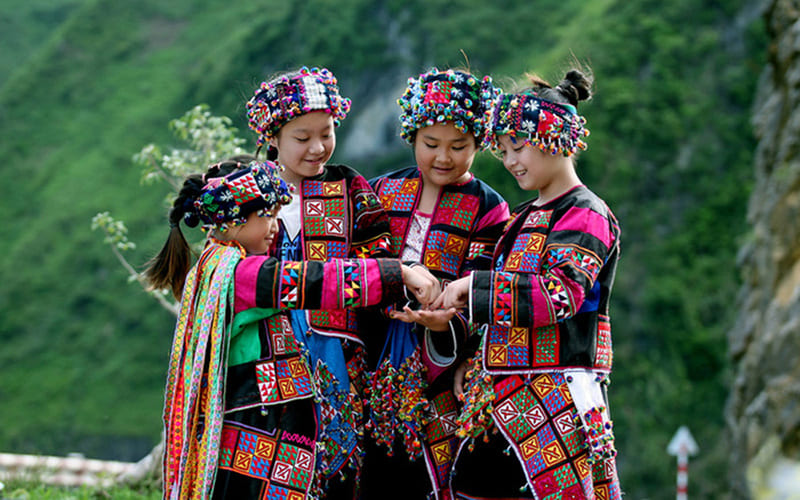
Ta Phen ethnic group
The Tà Phèn ethnic group mainly lives in the mountainous districts of Ha Giang province. Although their population is not large, their culture and customs are unique and reflect a lifestyle closely tied to nature. The traditional clothing of the Tà Phèn people is distinctive, with Tà Phèn women often wearing long skirts and collared tops, while the men usually wear simpler outfits. Farming is their primary livelihood, with rice, corn, and vegetables being their main crops.
The Tà Phèn people hold festivals on special occasions throughout the year, especially during harvest seasons. These ceremonies are deeply spiritual, expressing gratitude to nature and their ancestors. Traditional dances and folk music are essential parts of these celebrations. Though lesser-known, the culture, festivals, and customs of the Tà Phèn people leave a lasting impression and provide unforgettable experiences for global travelers.
Phu La ethnic group
The Phù Lá people mainly live in northern mountainous provinces like Ha Giang, Lào Cai, and Yên Bái. They are one of the ethnic minorities in Vietnam. The Phù Lá have many unique festivals, often held during Tết (Lunar New Year) or harvest season, to show gratitude to nature and their ancestors. The ceremonies are carried out carefully, accompanied by traditional dances and songs to wish for prosperity and good luck.
In addition to traditional festivals, their clothing is simple yet rich in cultural identity, featuring long dresses for women and simple outfits for men. The combination of culture, traditional festivals, and clothing highlights the unique characteristics of the cultural landscape in Hà Giang. Visitors here will have the opportunity to explore distinctive cultural traits, experience the life of the highland people, and learn more about their long-standing traditional values.
See more: What’s beautiful in Ha Giang in April?
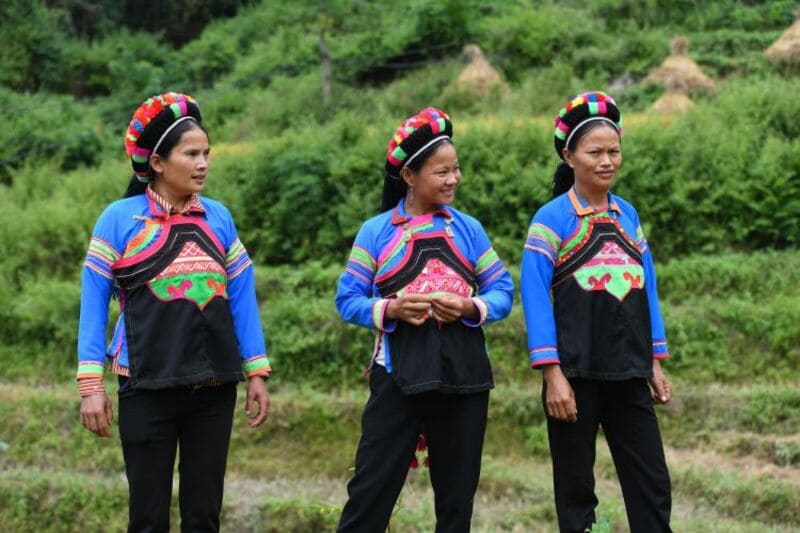
Co Lao ethnic group
The Co Lao ethnic group originated from China and migrated to Vietnam a long time ago. The Co Lao people are divided into three main groups: Red Co Lao, White Co Lao, and Green Co Lao. They have unique traditional clothing. Women usually wear long skirts decorated with many handmade embroidery patterns, while men wear simple clothing that still has its own distinct style.
Although the Co Lao people are not numerous, they have a rich and unique cultural identity, adding to the cultural diversity in the mountainous region of Ha Giang. When visiting Ha Giang, travelers can explore and experience the traditional activities of the Co Lao people while learning about the diversity and richness of the local ethnic minorities.
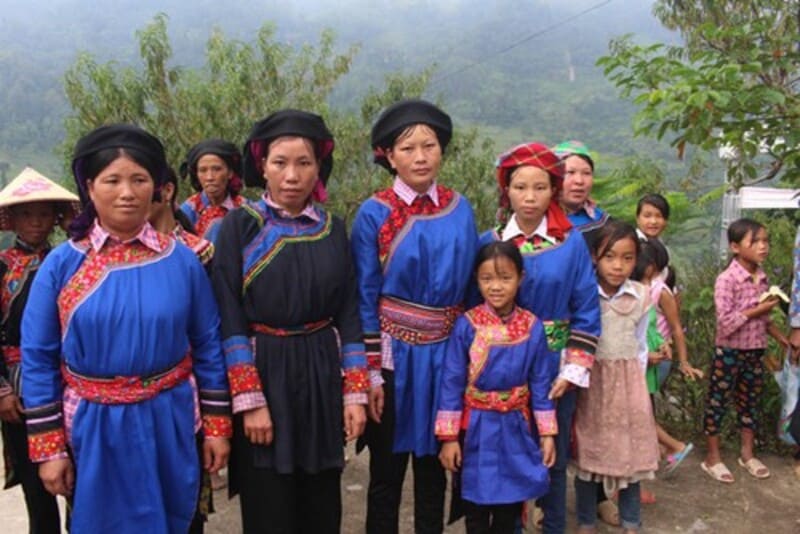
Ethnic groups like the Hmong, Tay, Dao, Giay, Nung, and Lo Lo have diverse cultures, featuring traditional clothing, special festivals, and rituals connected to nature and ancestors. The cultural diversity of these ethnic groups attracts many tourists from around the world to Ha Giang. So what are you waiting for? Pack your bags and join Ha Giang Loop Tours to explore the culture and lifestyle of the 17 ethnic minority in Ha Giang through the following tours:

